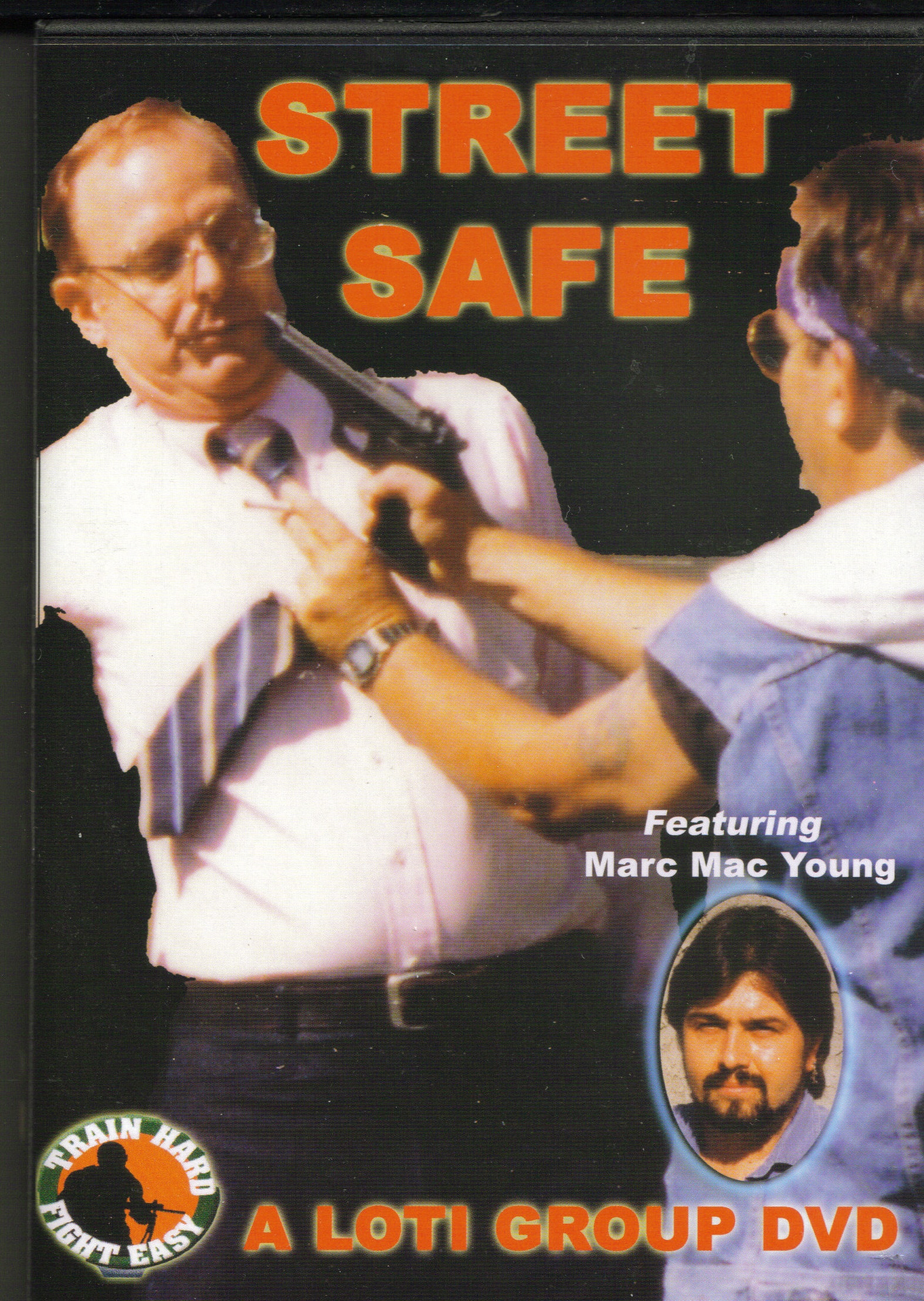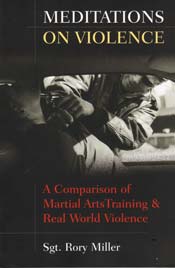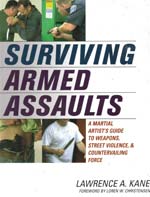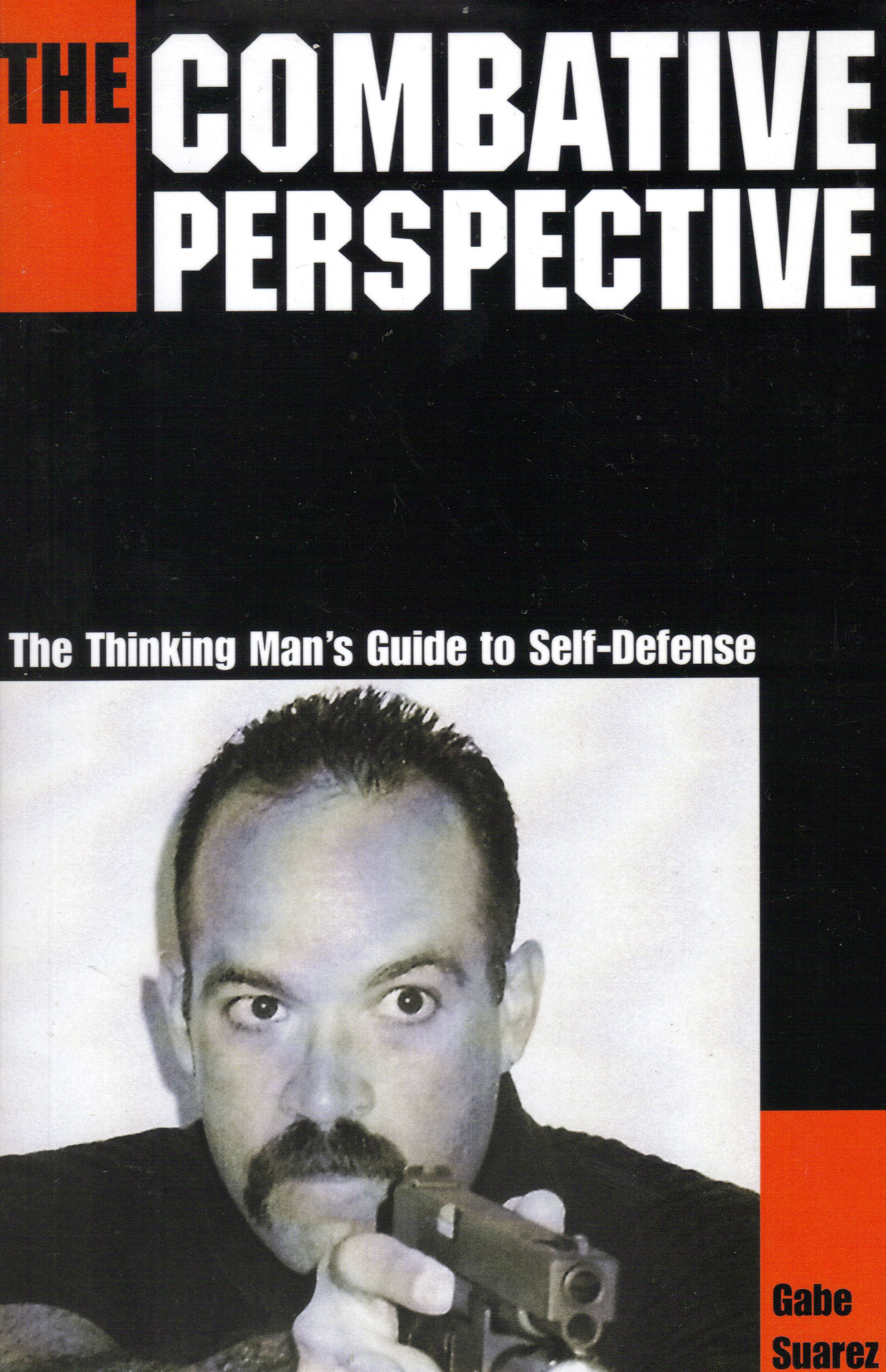Marc MacYoung?
Dianna Gordon MacYoung?
Animal E-list
Crime Avoidance Lectures
Crime Blog
Colorado Classes
Contact Us
FAQs
Hosting A Seminar
Crime Prevention
Expert Witness
Knife Defense
Law Enforcement
Martial Arts
Military
Movie Consulting
Women's Self-Defense
Links
Our Linking Policy
On-line Store
Train with MacYoung
Testimonials
Terms of Use
Topics
of Interest
There are many sources that will give you technical
tips on how to write action scenes. This isn't
one of them. This page is about how and why
conflict happens. Believable action is more
than sentence structure. It's also far
more difficult to write convincingly about it
if you don't know the information on this page.
MM
Writing Better Action Scenes
On this page:
Conflict and Violence -- Like Love -- Is Human |
Social Primate Behavior and Writing a Really Evil Bad Guy |
Mistakes Authors Make: Antagonist |
Mistakes Authors Make: Protagonist
Among my other bad habits, I give lectures on writing better and more believable action scenes at writer's conventions and for groups.
One of the things I tell authors during these talks is: If they're looking at the wallpaper, something is wrong with the movie.
That's a story from my days in the movie industry. It occurred when the set dressers pasted the wallpaper for the scene upside down. The comment about 'something's wrong with the movie' was the director's response when he was told of the problem.
I use that quote because it's a good rule of thumb for your action scenes. If viewers or readers 'notice the wallpaper,' there's something wrong with your scene.
In fact, the author needs to think his or her action scenes resemble the CIA. An old grumble common to the CIA goes: All you ever hear about is our mistakes, you never hear when we did it right.
When you write a good action scene (or the build up to one) nobody is going to notice. But you can bet the reader will notice when you write a bad one.
Take comfort, a good scene means they not only won't notice the wallpaper, but they won't notice anything else at all. That's because readers will be so caught up in the action, they'll be too busy to do anything except turn the page.
Part of my lecture concerns what happens during a violent situation. But a far more complex subject is the build up to that action. And yet, it's the build up -- the anticipation -- of the action that hooks readers. It's also a part writers often race over in order to get to the action. But without this build up, the scene is going to fall flat. So let's talk about that.
Conflict and Violence -- Like
Love -- Is Human
For more than 20 years, I have been writing about
crime,
violence
and how to stay alive in dangerous situations. In light
of this, I was stunned to discover how many romance
writers use my information as a resource. Real
life murder, mayhem, destruction and despair just
isn't romantic.
Worse yet, the writers were interested in observing me and how I behaved. It's not just my works, they wanted to use me for character development. When I had a chance to ask a romance writer 'why,' she replied: You've lived the life of our characters.
Errrrrr ... that's not how I would put it. While I admit I ripped a few bodices in my younger days, realistically there's not a lot romantic about the gritty and dangerous world I lived in for so long. While I was down there, however, I had the opportunity to see human aggression and conflict behavior at its most naked and raw. While I can truthfully say it's not pretty, I can guarantee you it is exciting.
And by that I mean exciting on a primate and biological level.
If you haven't realized it, the reason you are sitting here today is because, for millions of years, your ancestors managed to get up the tree before the leopard got them. Or they managed to bug out before the Huns showed up. Or maybe they were the ones who head-butted the Viking raiders back into sea. In short, they did something to stay alive long enough to breed.
So humanity has a long history of handling 'outside' threats. More importantly, we have an equally long history of social violence, internal conflict and establishing social hierarchy. And that is what your reader will unconsciously recognize and react to in your writing.
An interesting thing about social violence is it isn't designed to injure. It's used to establish or maintain the social environment. Specific behaviors are programmed into us. That's right, just like love, in conflict, we have set patterns we follow. More importantly, our bodies follow those blueprints, and we're dragged along. Those chemical, social primate and emotional behavioral schematics that have a proven track record (como se dice 'ancestors?') of ensuring our survival.
We unconsciously know and recognize these patterns. Well, sort of ... it would be more accurate to say when we see them, we emotionally and viscerally react to them. Even if we don't consciously know what we are reacting to or why.
When readers get sucked into this pattern, they will be so caught up in the action they won't notice anything else. Conversely, when your action scenes fail to follow these frameworks of human behavior, your reader will 'notice the wallpaper.'
Now here's the kicker ... while this behavior is most
obvious and extreme in physical violence, these same
patterns also apply in other types of conflicts and
aggression. I've seen this kind of behavior in gorilla
pits in the zoo, biker bars and board rooms. Just
because it's not physical doesn't mean:
a) it isn't
violent
b) it isn't following the same patterns
Social Primate Behavior and
Writing a Really Evil Bad Guy
Want to show your bad guy as a true villain? Have him kill
one of his followers. If you want to make him really evil have him personally torture,
before killing, someone within his own 'tribe' who has angered
him. This shows he cannot be trusted to keep
the 'social contract' that bonds group members. And being trusted by others is a big element of
an alpha
personality.
So let's look into tribal behavior.
Humans are social apes. We need each other to survive and thrive(1). And that is why we have preprogrammed patterns of behavior. While our specific culture might give us details on how to handle these basic patterns -- like sex, marriage, tribal economy, etc. -- the starting point is our primate wiring. And that wiring means we feel impelled to come together in groups in order to survive. And with people living together, there are bound to be conflicts. So our neurological wiring has patterns, responses and, most of all, resolutions ingrained to handle those issues.
Evolutionary psychologists say we are designed to function best in groups of about 150. These members are our 'tribe.'
And the rules on how you treat your tribal members are different from those applying to someone outside that group ... including the fact it's OK to kill and rob 'outsiders.' If humanistic attitudes interfere with your grasp of this concept, let me put it simply: The mindset is the only people who are 'human' are those in your tribe. You wouldn't be killing a human. You'd be killing a (fill in the blank). And that is usually synonymous with enemy.
The short version of inner-tribal dynamics is: "Bang, bang, kiss, kiss."
The long version is: build up, appropriate level of conflict behavior, resolution, make up. This is what you need for normal, functional and, most of all, long-term group dynamics. These patterns allow for conflicts, resolution and -- again important -- the continuation of the group and its members. Finding resolution and making up is an important part of keeping out tribe strong. If we weaken the tribe by killing or banishing too many members, we die.
A big element of what makes a 'bad guy' is he breaks these fundamental patterns. For example, social violence is used to establish or maintain social order. A part of that is behavioral correcting violence. This occurs when someone is doing something that another group member finds objectionable.
The normal pattern of such a situation would be:
Communication ("Stop that.")
A threat display ("Stop doing that or there will
be physical repercussions.")
Social violence (step up, hit once and step back
-
low level use of force)
Repeat communication (repeat order to stop)
*Here is where the situation comes to a
crossroads. The individual can
either insist on continuing with the objectionable behavior,
counter attack
or submit. For the sake of this example, we'll follow the
submit option.*
Individual submits (ceases unacceptable
behavior)
Physical conflict or aggression ends
Given time, submissive person makes peace gesture
(beginning of kiss kiss)
Dominant individual accepts apology and sets terms
Dominant indicates continued acceptance of other
(end of kiss kiss)
Things return to normal
What I just wrote defines the normal conflict cycle. This pattern is pretty basic. In fact, before politically correct thinking banished it, most people would easily recognize it as actions taken to discipline a misbehaving child. The point is, even without the physical part, you should be able to recognize the basic pattern even in ... say ... a conflict at work.
And you must write your story in these recognizable ways. Ways that work with how we -- as humans -- behave.
Three things are important for writers. The first point is that this pattern is used for those within your tribe. That's why there is so much communication (even if it is screaming and threat displays). It is emotionally intense, but most of the violence is verbal. The physical violence is low level and more about maintaining social protocols than it is either harming the other person or establishing social dominance for its own sake.
Second is that the dynamics change if the individual, who is being told his or her behavior is 'unacceptable,' has a different agenda. This can and often will escalate into a 'fight.' But that, too, will follow 'monkey dance' patterns.
Third is that 'bad guys' don't follow this script. They cross lines, overreact, refuse to compromise and refuse to accept an apology (instead, they accept groveling) and, even then, they might decide to 'punish' to the extreme.
Your 'good guy' is someone who follows these societal rules. Your bad guy doesn't follow them. In fact, he is more concerned about himself than getting along with others. And this includes treating everyone as 'outside his tribe.'
Another way of describing this is mental and emotional 'parts' of the personality. Your bad guy is missing parts. Parts that other people have. Parts that keep normal people from crossing the line and doing what he does. For example, instead of a single strike to restore social order, a bad guy will continue to mercilessly beat someone -- even when that person is trying to submit. The mental part that tells a normal person it's time to stop is missing.
You can work with this concept in many ways to make a more believable antagonist. In fact, that brings us to the first segment of my lecture to authors, the mistakes. Particularly mistakes about their bad guys.
Mistakes Authors Make: Antagonist
Robert Heinlein once wrote, "Your enemy is never a
villain in his own eyes(2)."
That's an important concept to remember when it comes to writing
believable antagonists.
During an interview, actor Al Pacino made a similar observation that ran along the lines of "your antagonist must somehow believe what he is doing is justified. If you don't put that in, all you have is a mustache-twiddler."
The bottom line is -- even if his rationalization for doing it is as screwed up as a soup sandwich -- somehow, some way your antagonist must be giving himself permission to act. In fact, some of the worst deeds in history have been committed by villains who believed themselves to be the aggrieved parties.
With this in mind, here is a list of errors many authors make when creating an antagonist -- especially a villain who is willing to use violence to achieve his goals. For the record, you don't have to explain these reasons to your readers, but, if you want to have a believable bad guy, you need to have answered these questions in your own head.
Mistakes Authors Make:
Protagonists
This list is mixed. Some are questions that an author
needs to answer before writing
about conflict and action. Others are concepts you
need to think about before setting your character on a
course of action.
These are just a few of the things that I talk about in my lectures to writers. I also have a lecture about how to write more believable alpha male characters. This lecture includes how to write a convincing lone wolf character and what motivates such a person.
I also offer a proof reading service where I will read your manuscript and go over problems with your action scenes and character's behavior in dangerous situations. In short, I'll help you present a product that not only will have a better chance of selling, but your readers won't be looking at the wallpaper.

1) Take a badger and drop it into the middle of the forest. Take a human and drop him naked in the same forest without any tools. A very short time later you have a thriving badger and a dead human. The badger has instincts, fur and claws. We NEED other people for our survival. Not only to manufacture our equipment, to cloth us, to feed us but, most importantly, for information. Even if the person was able to survive in the forest, the knowledge to do so would have come from other people. Someone can be a hermit or curmudgeon but ONLY because of the support and services of other people. Return to Text
2) The full quote is: Your enemy is never a villain in his own eyes. Keep this in mind, it may offer a way to make him your friend. If not, you can kill him without hate--and quickly. Return to Text
3)
I recently worked with an author who has a scene
where a robbery attempt failed, but the protagonist
hasn't escaped yet. One of the muggers was knocked down.
The protagonist realizes that the mugger now intends to
kill him. The writer had sensed that the dynamics of the
situation had changed, but couldn't articulate why it
had changed. As such, the rest of the action scene
wandered.
Rory Miller (Meditations
on Violence) accurately observed 'Criminals cannot
be shamed, but they can be humiliated." By being knocked
over, the criminal was humiliated. That turned his
motivation from robbery into murder and revenge. From that point on,
that would be his goal. That new goal would dictate
his further behavior. Once the new motivation was
established, it was much easier for the writer to regain
control over the action scene.
Return to Text
4) A knife is a tool, a dagger is a weapon. There are design modifications made to a blade to turn it into a weapon. These changes render a knife useless as a tool (e.g. the double edge removes your ability to put a finger or thumb on the back of the blade for extra leverage). In times when people openly carried weapons, there was tendency to also carry a knife as a tool. Not only because of functionality, but would you like to cut your meals with the same weapon you killed someone with? Return to Text


Street Safe: How to
Recognize and Avoid Violent Crime
Learn More >
Order Now!

Meditations on Violence
Learn More >
Order Now!

Surviving Armed
Assaults
Learn More >
Order Now!

Psycho-Physiological Effects of
Violent Encounters
Learn More >
Order Now!

High Risk Entry
Learn More >
Order Now!

Post Shooting Trauma
Learn More >
Order Now!

The Missing Link:
Self-Protection Through Awareness, Avoidance and
De-Escalation
Learn More >
Order Now!

Deadly Force Encounters
Learn More >
Order Now!

Warriors: On Living with
Courage, Discipline and Honor
Learn More >
Order Now!

CQB Clearing Tactics For First
Responders/ Patrol Tactics for 911 Officer
Learn More >
Order Now!

Violence, Blunders And
Fractured Jaws: Advanced Awareness, Avoidance and Street
Etiquette
Learn More >
Order Now!

The Bulletproof Mind
Learn More >
Order Now!

Emotional Survival for Law
Enforcement
Learn More >
Order Now!

The Combat Perspective: A
Thinking Man's Guide to Self-Defense
Learn More >
Order Now!
Vol 3: The Drug User
| About navigating this site | Animal List | Bibliography | Bullies | Burglary while on vacation | Classes in Colorado | Car Jacking | Children and Martial Arts | Child Safety | Criminal Mindset | Cults in MA/SD | De-Escalation | E-mail Dianna | E-mail Marc| FAQs | Have MacYoung speak about crime avoidance | Home Page | Home Defense | Hosting a Seminar | Fear | Five Stages of Crime | Knife Fighting | Legal Issues | LEO/Correctional Officer/EMS | Linking policy | Links | Martial Arts | Photo Gallery | Property Crime | Psychology | Rape | Robbery | Safe Dating | Self-Defense Training | Selling your books/DVDs on NNSD | Seminar Schedule | Stalking/Domestic Violence | Street Fighting | Terms of Use | Testimonials | Train with Marc MacYoung | Who is Dianna Gordon MacYoung? | Who is Marc "Animal" MacYoung? | Victimhood | Workplace Problems | Zero Tolerance | ||
| ? 1998-2008 No Nonsense Self-Defense, LLC. All rights reserved. |